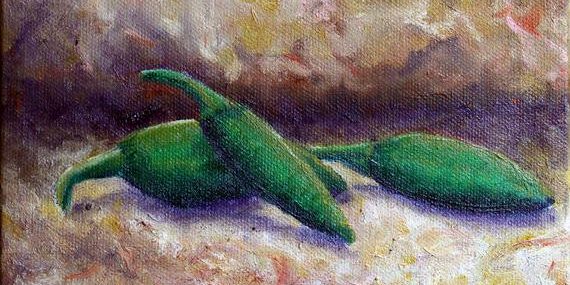The jalapeño, also known as cuaresmeño, takes its name from the city of Jalapa, in the state of Veracruz, Mexico where around 5,000 hectares are planted.
The use of jalapeño in the Americas can be traced back thousands of years, including the use of some smoking methods to protect them.
A raw jalapeño is a very important plant and is used as a vegetable, spice and external medicine worldwide.
It is usually consumed either raw or cooked and used as additives in the food industry and is also a rich source of vitamin C, vitamin B6, and vitamin E, vitamin K, carotenoids (provitamin A), flavonoids, and capsaicinoids in a moderate amount.
The most abundant analogues in jalapeño are capsaicin and dihydrocapsaicin. Nordihydrocapsaicin, homocapsaicin and homodihydrocapsaicin are also present in jalapeño peppers, However, they sometimes contribute little to the total capsaicin concentration and pungency. Meantime, the capsaicinoids have analgesic and antioxidant function, including anticarcinogenic properties that inhibit andogen-dependent growth of breast cancer and gastric adenocarcinoma.
Pungency is an essential characteristic associated with the genus Capsicum members. There are five levels of pungency based on the use of Scoville heat units (SHU):
0–700 SHU – Non-Pungent
700–3,000 SHU – Mildly Pungent
3,000–25,000 SHU – Moderately Pungent
25,000–70,000 SHU – Highly Pungent
>80,000 SHU – Very Highly Pungent
The pungency level of jalapeño fruit is influenced by sunlight, temperature and water availability.
High temperature is one of the main hazards that cause the reduction of jalapeño fruits, which limits the survival and productivity of peppers in most parts of the world.
Therefore, a suitable temperature to give jalapeño bring a good environment for the growth.
References
Influence of fuit ripening stage and harvest period on the antioxidant content of sweet pepper cultivars. Plant Food Hum. Nutr. 2011. Marti M.C., Camejo D., Vallejo F., Romojaro F., Bacarizo S., Palma J.M., Sevilla F., Jiménez A.
A preliminary evaluation of ion channels and membrane excitability as possible target mechanisms. Turk. J. Biochem. 2006.Djamgoz M.B.A., Isbilen B.
Antioxidants in hot pepper: Variation among accessions. J. Environm. Sci. Heal. B. 2006. Antonious G.F., Kochhar T.S., Jarret R.L., Snyder J.C.
Pungency in Paprika (Capsicum annuum): 1. Decrease in capsaicinoids content following cellular disruption. J. Agric. Food Chem. 2002. Kirschbaum-Titze P., Hiepler C., Mueller-Seitz E., Petz M.
“Chile Pepper and The Threat of Wilt Diseases”. Plant Health Progress. 2003. Sanogo, Soum.
“Characterization of different Capsicum varieties by evaluation of their capsaicinoids content by high performance liquid chromatography, determination of pungency and effect of high temperature”.2013. González-Zamora, A; Sierra-Campos, E; Luna-Ortega, J. G; Pérez-Morales, R; Rodríguez Ortiz, J. C; García-Hernández, J. L.

